Webster Tank, 1936
1234




1234
|
Southpark,
I was just stating that the modern building appears to be in the same location as the older barn. Kind of neat that they used the same plot of land for the same shape of a building. I think you are right about the piles out in the field. Sometimes after working in an office all day on computer what not, I think it would be nice to go out in the sun and spread some manure around a filed every once in awhile. The Sawmill interest me as well. Had not seen pictures of one along the C&S trill now. (maybe I had not looked enough). Was wanting to make one on my Layout. It would serve a lumber yard we have on the Standard gauge layout. |
|
In reply to this post by Chris Walker
I'm rather intrigued with the Sawmill.
Note the rather substantial trestle across the South Platte, I'd be thinking this for a tramcart rather than a railway siding since the structure seems elevated to a higher level. Just what the arrangements were for getting the cut lumber across the Mainline to the waiting Coalcar on the housetrack, a barrow cart or transfer to horse drawn cart? Chris, it seems to me that there is a harp switch stand with light target, on the mainline, just this side of the water tank in the Jackson photo. I'd bet that there is a short spur, parallel to and hiding behind the tramway trestle, for off loading timbers / lumber into coal cars or flat cars. Just my 2-cents worth. Jim
Jim Courtney
Poulsbo, WA |
|
This post was updated on .
In reply to this post by Rick Steele
Ya'll pardon me if I get OCD about the Webster water tank's location over the years. I think it was moved. Consider the Jackson c1887 view and the later 1930 view, both enlargements from photos taken from the Kenosha grade to the west.
An enlargement of the 1887 Jackson photo referenced above, focusing on the water tank.  Both the 1918 valuation map and the 1929 and 1930 views of Webster (though the perspective is not exactly the same) show the water tank back on the tangent of the mainline, leading into the curve. The c1887 view above, shows the tank on the outside of the main line curve. The switch stand to a possible lumber spur serving the sawmill is also noted. 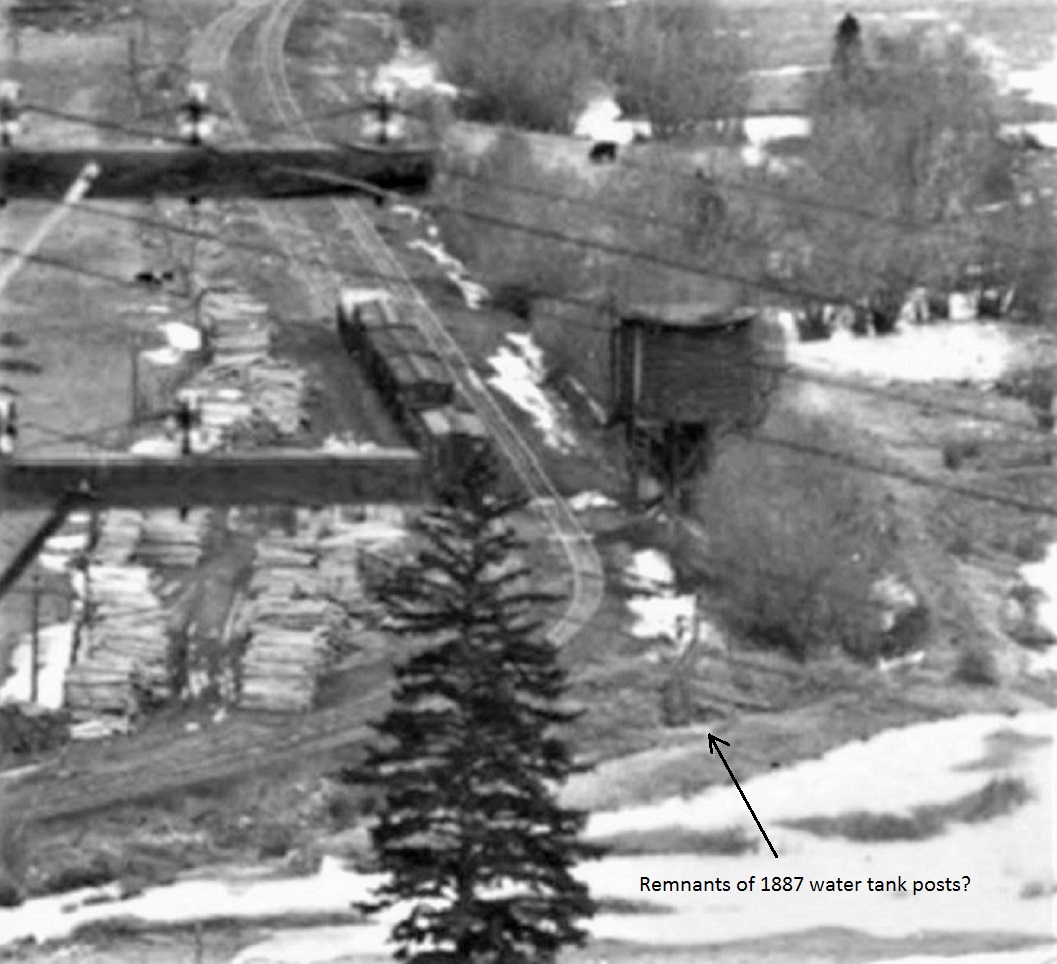 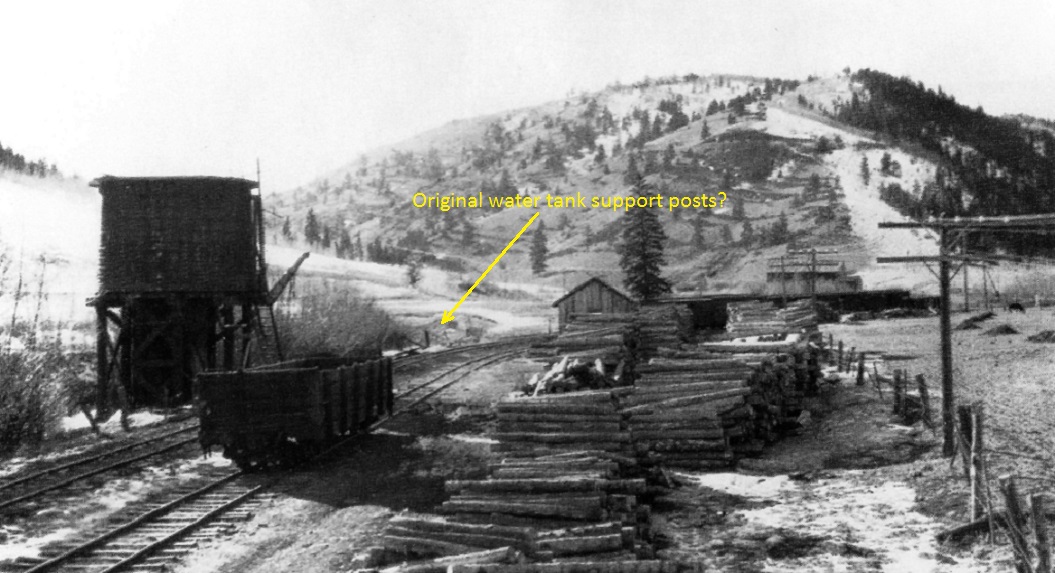 The 1929 and 1930 views shows some sort of wooden timbers on the outside of the mainline curve. Could these be part of the support posts of the 1887 tank, braced as the South Platte eroded the bank supporting the tank? If so, then the 1887 water tank would have been located about as shown, a position that seems to me more consistent with the 1887 view:  Perhaps a flood or the gradual undermining of the bank supporting the water tank, by the river, forced the relocation of the tank sometime prior to the 1918 valuation map. Any of you buying this?
Jim Courtney
Poulsbo, WA |
|
Buying it? It all depends on the price that you're selling it for.
As far as the Tank configuration goes, Peaked versus flat roof means nothing. The C&S replaced many of the peaked roofs with flat roofs once they took over. Don't know why, it's just the way they did it. As far as the tank being moved? It very well could have been. Take a look at a series (not one, a SERIES) of old timetables and see where the water stations moved over the years. Clear Creek canyon showed a lot of them as did Platte Canyon. So yeah, it could have moved. It could have been burned down and replaced. Aliens could have moved it from Downtown Denver in their space ship... all ready pre-built. I was telling you that I have no record of it and I am not anal enough to really care. Webster had a tank, it had two depots, one of UP standard Design that burned down and a Wooden Freight House erected later in approximately the same spot. The industries served were a sawmill and the Coke Ovens. Both gone by 1933. The railroad is not a fixed thing, it is changed over the years due to earthquake, flood, fire and the whims of its owners. Just because it was one way in 1893, it does not mean that it was the same in 1933. So sell what you want, I'm just not gonna pay what you are asking.... Rick |
|
This post was updated on .
You're right, of course, Rick.
In the greater scheme of things, it doesn't really matter if the tank was moved a hundred yards or so. I tend to get caught up in the period photos of the South Park, Central and C&S, and probably study them far too much. I'm still spending time studying all the new (to me) photos of Central City just posted. Sometimes I think maybe I'm just seeing things, from staring too long, and need a reality check. Jim
Jim Courtney
Poulsbo, WA |
|
I have found the Webster thread informative and would like to know more about the charcoal kilns. How many were there, when were they in operation, where and what was the charcoal used for? Thanks in advance.
Lee Gustafson |
|
This post was updated on .
Hi Lee,
I have no statistics on the amount of Charcoal shipped. I do know that the DSP&P had a series of outside framed box cars (single sheathed) built for charcoal service. Charcoal, like coke, was a very light commodity. These cars were large for their time. If the commodity was not important, then the special cars would not have been built for this service. Did the smelters use it? I don't know, but that would be my best guess. I saw a photo of a DSP&P Charcoal Box parked outside the Omaha and Grant Smelter in Denver. Rick |
|
In reply to this post by South Park
The red house is where I get my hair cut, the dog was with me and invited in and then found an open door so I chased the so and so over much of that area.
The south side is muddy which is why I presume the grade was where it was, if there are any remains I did not see them. I assume that road improvements over 70 odd years have erased much of what may have been there. I assume that the need for a Depot of consequence was due to traffic going up Hall Valley into the Blue River. My understanding is that there was not a plan to extend the rail to the Blue River when the Depot was built. Webster does have 2 graveyards, the old one is on the south side. |
|
In reply to this post by Jim Courtney
The early photo if it was from when the railhead arrived would be 1878.
There seems no ballast between the ties and looks a busy place so could have been head of the track. TOB well they came later. The building is a light colour, I know there has been past discussion saying that in the very early days they were brown. Looking at it and obviously not the clearest of angles it looks like the original Como Depot before it was extended? Or is it my imagination. |
|
The depot was extended all the way east to Denver and west to Como, then
the center section removed. Read my fascinating blog about it.
"Duty above all else except Honor"
|
|
This post was updated on .
In reply to this post by Lee Gustafson
Lee,
The number of ovens varied over the years. Mac Poor quotes Thomas St. John as saying "There were about 12 to 15 charcoal ovens in operation near Webster around 1892". I haven't found a reference for when they were abandoned. These are all the photos I have: http://cdm16079.contentdm.oclc.org/cdm/fullbrowser/collection/p15330coll22/id/13293/rv/singleitem 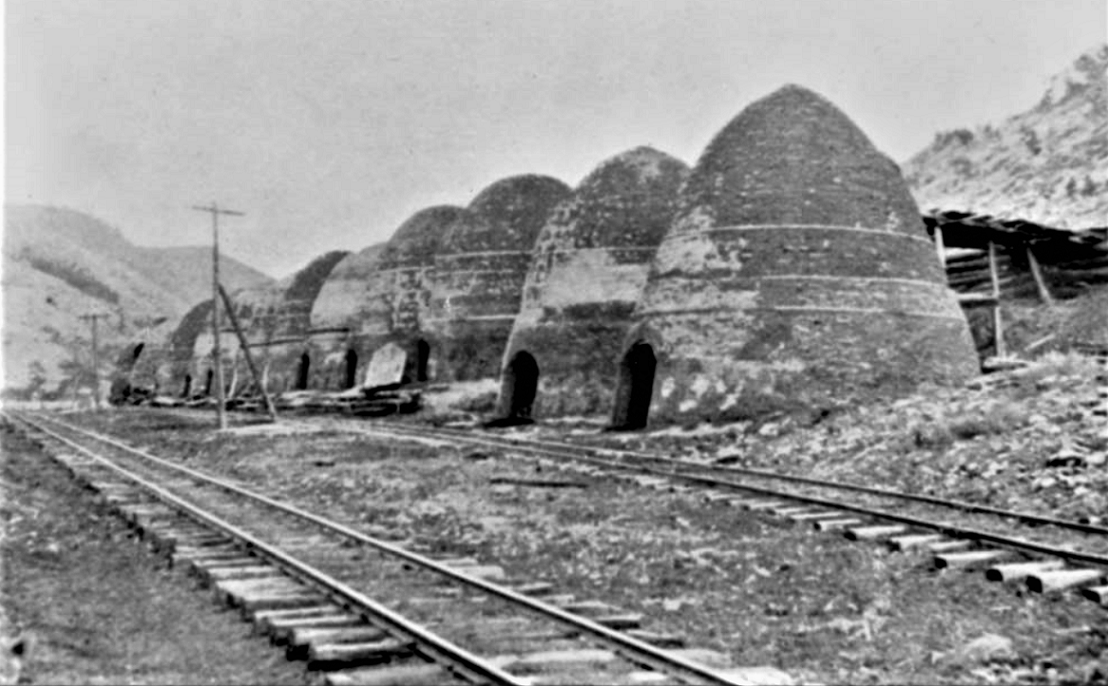 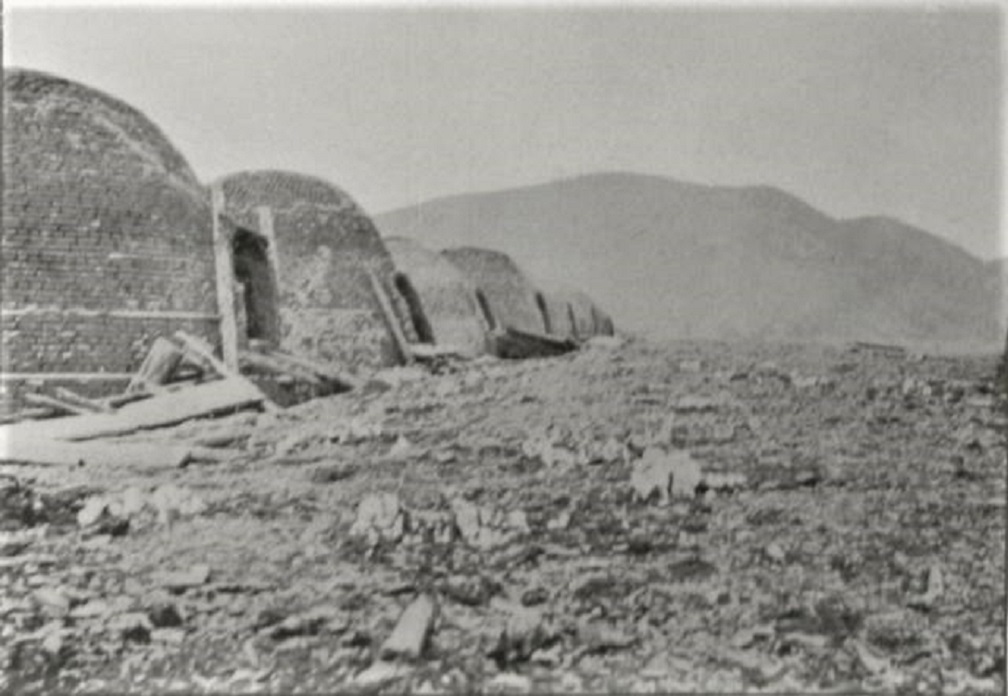 Park County Local Histroy Archives, negative number 589. This is a view from the back side of the ovens, facing the road. Photo is dated 1898. 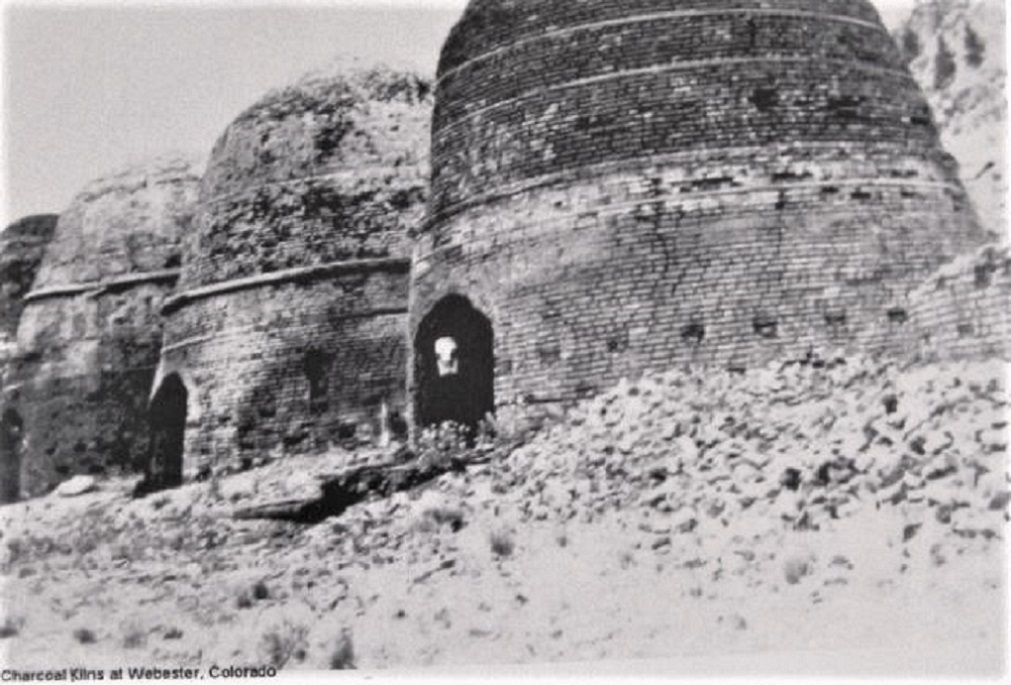 Park County Local Histroy Archives, negative number 1887. There are a couple of color views of the kilns in ruins, at the Park county Archives: http://www.parkcoarchives.org/photos/photos6/photos_webster.html
Jim Courtney
Poulsbo, WA |
|
In reply to this post by ComoDepot
Per ComoDepot:
Webster does have 2 graveyards, the old one is on the south side. The Park County Archives has a photo of the "White Cemetery", dated 1939: 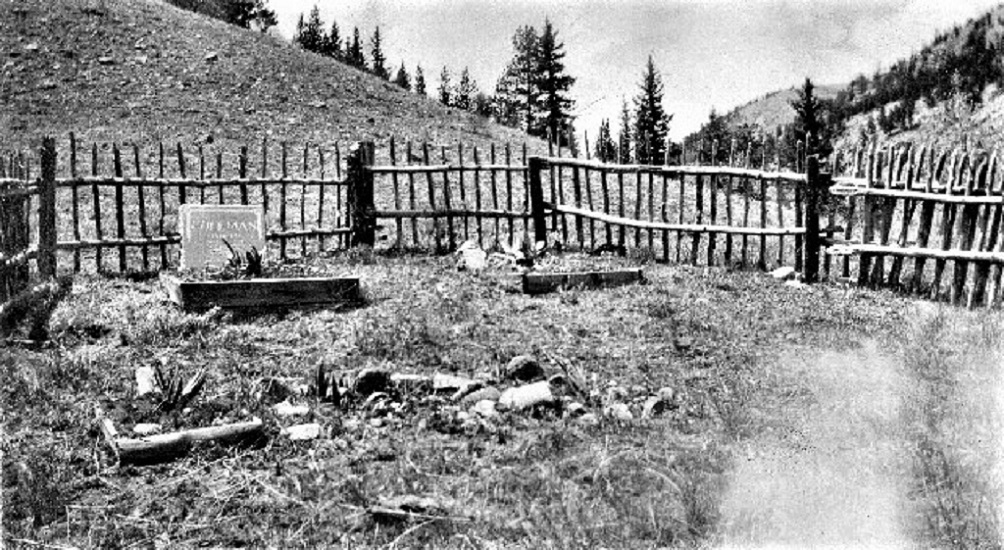 Park County Local Histroy Archives, negative number 2868. Not sure where it was located, assume it is still there.
Jim Courtney
Poulsbo, WA |
|
This post was updated on .
In reply to this post by ComoDepot
Ted Kierscey produced a colorized version of the Weitfle view of the depot in 1878-79, when Webster was the rail head for the Leadville boom:
 http://www.narrowgauge.org/images/tkcok/Special_m00241.jpg The background was derived from an early 1980s photo of the Webster station site. Other photos for the Kierscey collection can be accessed at: http://www.narrowgauge.org/ngc/html/excursion4/excursion4-tkc-1.html
Jim Courtney
Poulsbo, WA |
|
In reply to this post by Jim Courtney
I'll buy it
 even if Rick doesn't, the Tank has clearly been relocated, just no money down though, Jim! even if Rick doesn't, the Tank has clearly been relocated, just no money down though, Jim!
I had been wondering about a Siding there, but apart from DSP&P, and the CRRA#12, I have no written records such as you guys have to proffer. Looking back the other way, a great Otto Perry shot of Mike's favourite locomotive blocking the road crossing. Cooling wheels and /or releasing Retainers most likely. OP-4078  http://digital.denverlibrary.org/cdm/fullbrowser/collection/p15330coll22/id/45815/rv/singleitem/rec/23
UpSideDownC
in New Zealand |
|
This post was updated on .
Once again, a tremendous discussion of perhaps a not-so-remarkable place that yields a number of remarkable details.
Looks like there were six kilns (Edit--Jim's post show's the number varied over time). I swear the kilns were there when I was a kid, but it is obvious whatever I recall was something else. Chris, that is a great image of a really long train with 537 and 71-73 (72)? That is a lot of stock cars in the consist. I wonder if this was one of the last movements bringing cars back to Denver (why yes, it is)? Why stop the locos just past the crossing (not that there was much traffic?)? I would have thought they would at least pull to the far switch. Good job, all!
Keith Hayes
Leadville in Sn3 |
|
For some reason I recollect reading about charcoal being shipped to Leadville. Also read a comment that they said there were enough trees to last a 100 years but by the late 1890's they had mostly gone.
I am not aware of any debris field from the Kilns, perhaps they were salvaged. Most of that happened in the 1940's. |
Re: Webster Tank: Taking water in 1937
|
This post was updated on .
In reply to this post by Keith Hayes
Keith,
Why stop the locos just past the crossing (not that there was much traffic?)? I would have thought they would at least pull to the far switch. The long freight has just finished crossing Kenosha, both locomotives are thirsty, last taking water at Jefferson probably. They need to take water at Webster tank. Spotting two locomotives accurately under a water tank spout, while pulling such a long train is difficult. So, they stop the train at Webster, cut off the first two boxcars (to clear the crossing) and pulled forward to the water tank: 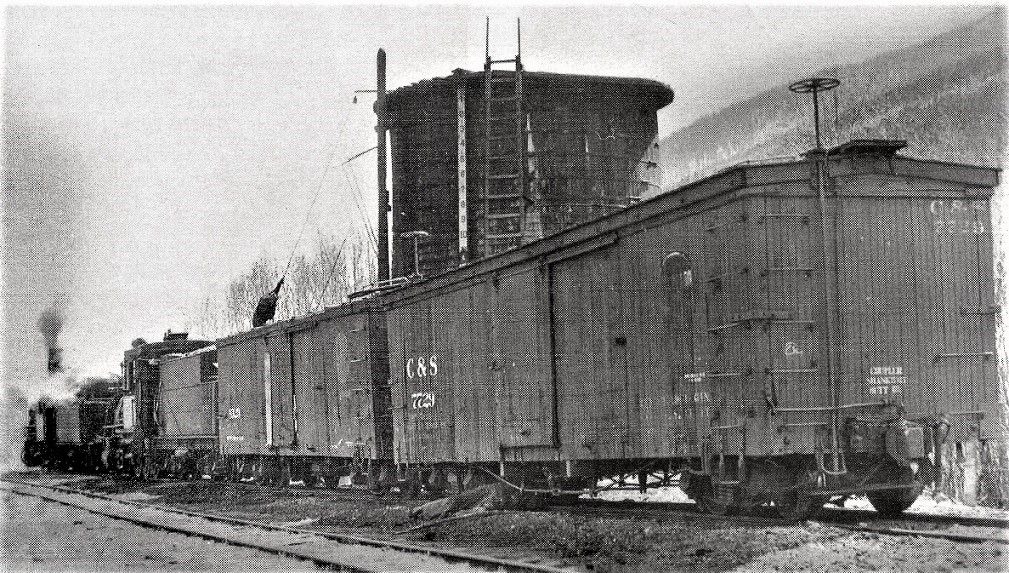 Otto Perry photograph, in the Klingers' C&S High Line Memories . . . While the fireman of the second locomotive fills the tender, the head end brakeman either takes a nap or is adjusting the brake linkage under boxcar 7729. Boxcar 7729 is one of the oldest freight cars on the roster in 1937, one of the first order of St Charles boxcars built for the UPD&G. When watering is complete, the locomotives and first two cars will back to the rest of the train, couple up, pump air, do an air test and then depart for Grant and points east. This is a great way to prolong train movements on a model version of the C&S; taking water is time consuming, creates extra movements. Chris, have you found this Otto Perry photo on DPL? South Park attributes the photo to the A.A. Anderson Collection.
Jim Courtney
Poulsbo, WA |
Re: Webster Tank: Taking water in 1937
There is a print in the Andy Anderson collection, which now belongs to the DSP&P Historical Society. It's a postcard made by Otto Perry. Here's a better scan of the photo, Otto Perry's notes on the back, and Andy's notes written in the album below the photo (all courtesy of the Denver, South Park, and Pacific Historical Society):  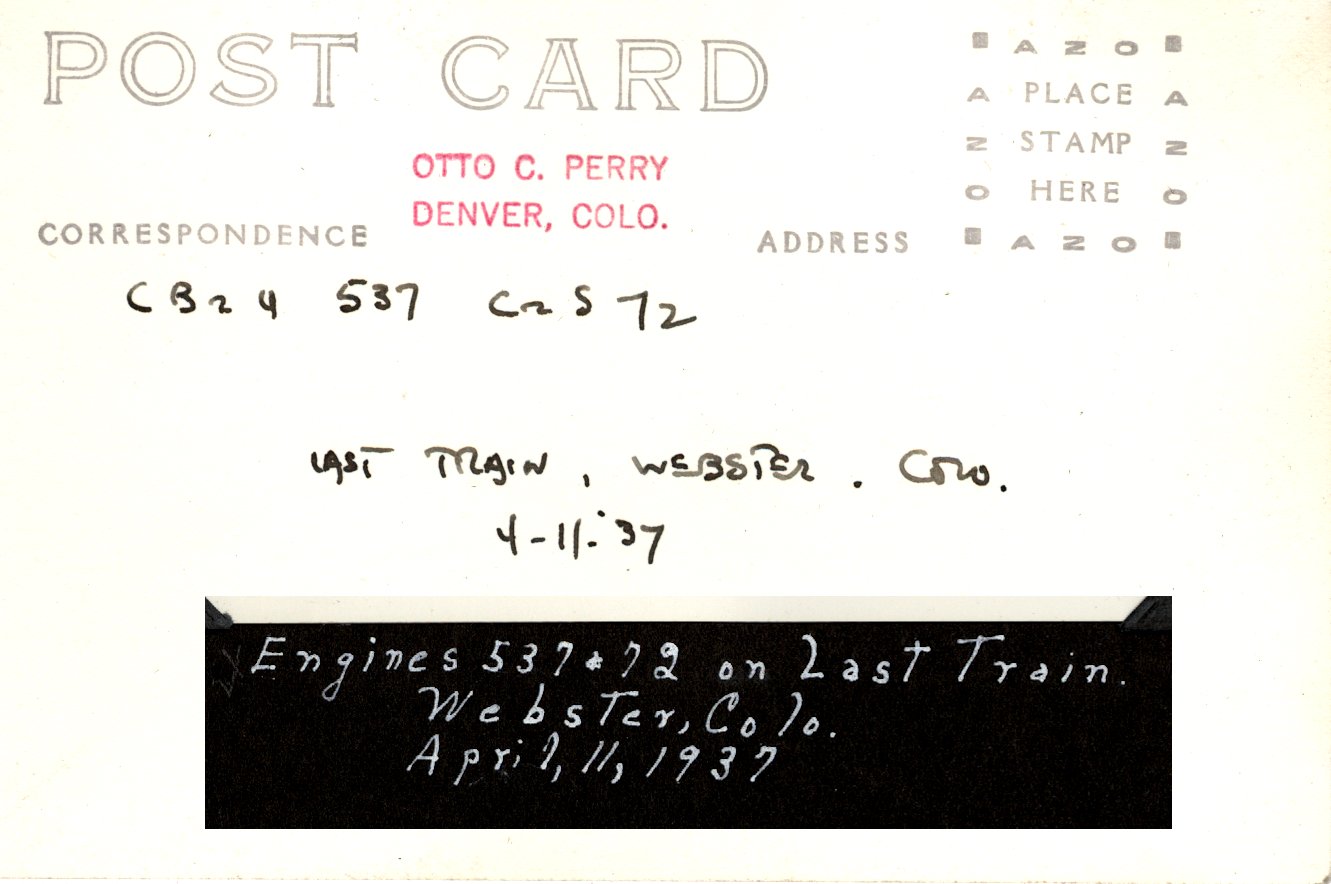
|
Re: Webster Tank: Taking water in 1937
|
Wow!
 Thanks Todd! My scanner can only do so much. Otto could sure take a great photo . . .
Jim Courtney
Poulsbo, WA |
Re: Webster Tank: Taking water in 1937
|
In reply to this post by Jim Courtney
Well!
That makes a lot more sense.
Keith Hayes
Leadville in Sn3 |
«
Return to C&Sng Discussion Forum
|
1 view|%1 views
| Free forum by Nabble | Edit this page |

